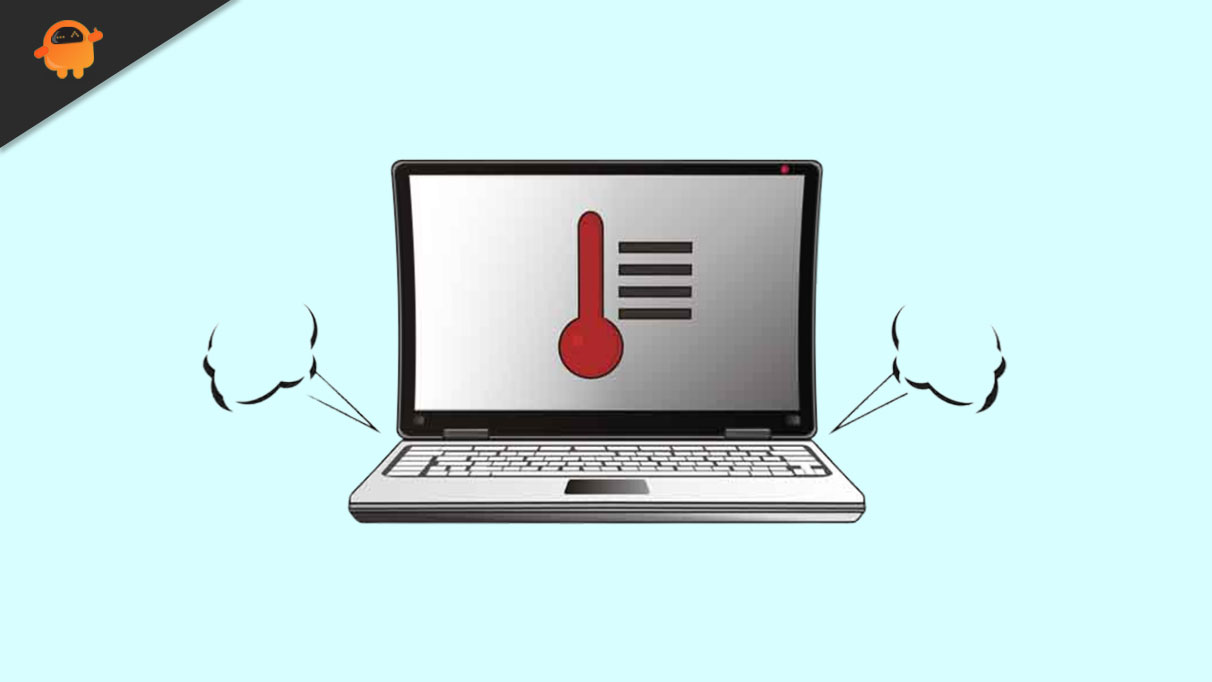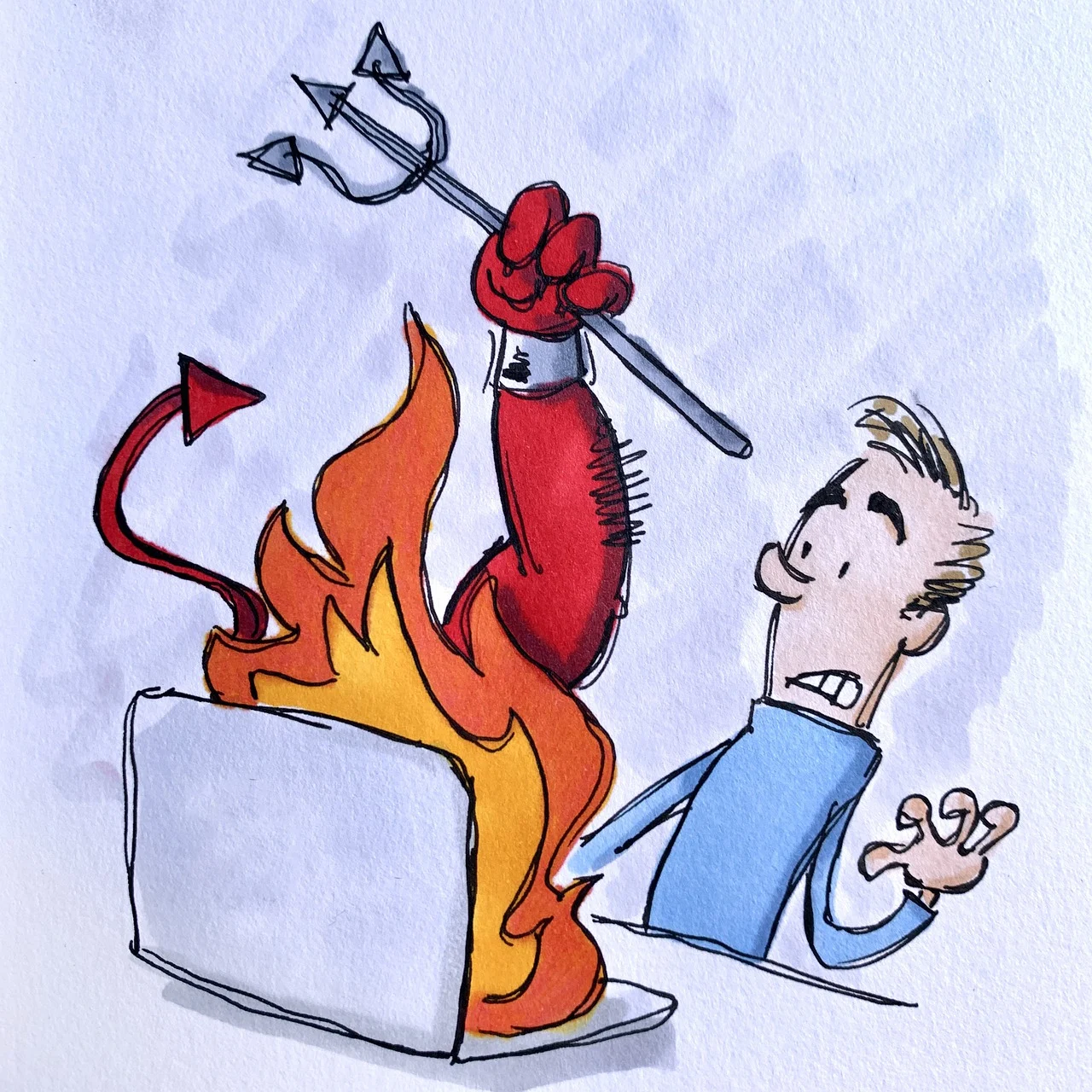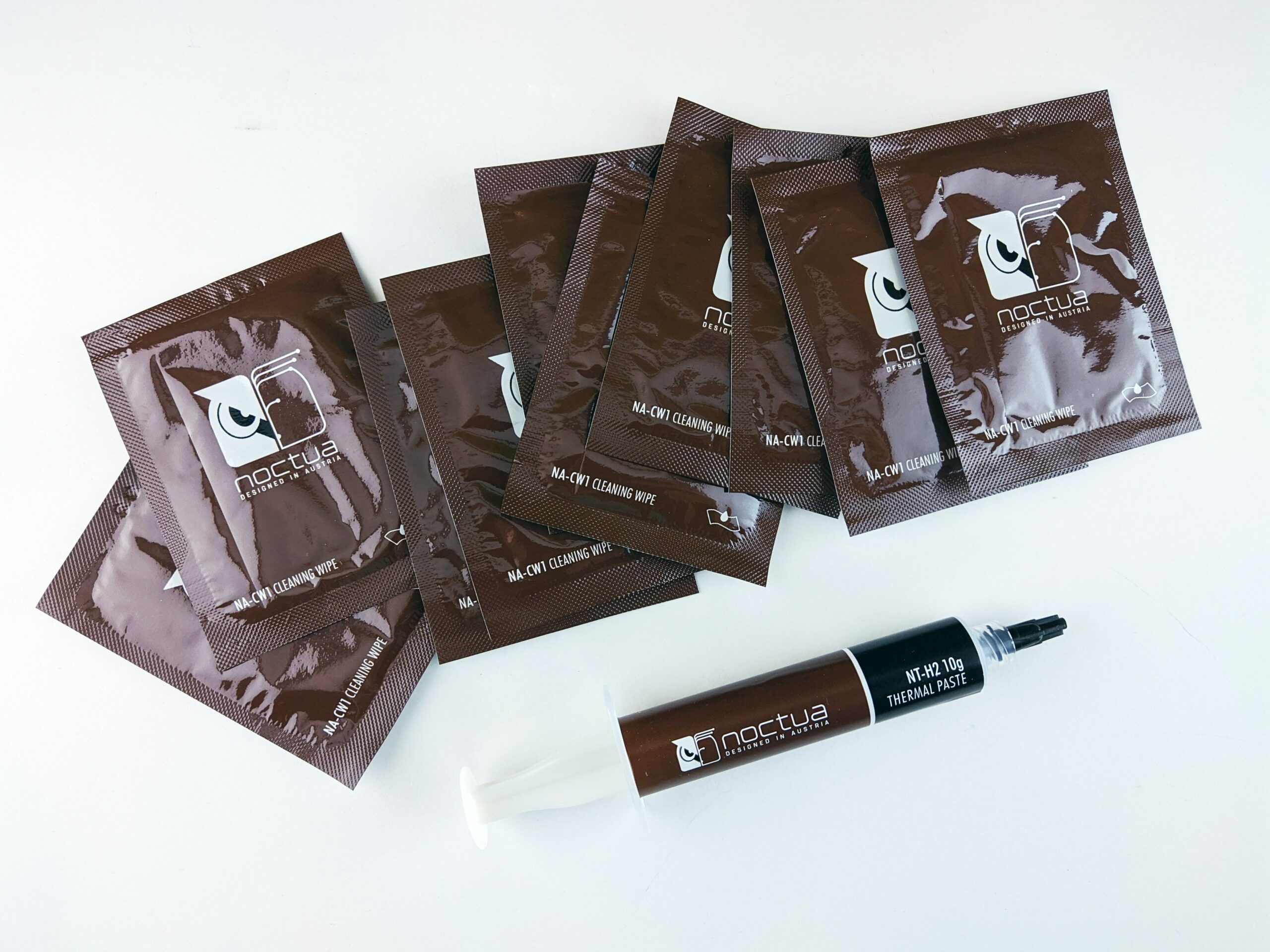If, while playing another computer game, you suddenly wonder, “Why does my laptop get so hot?” the issue must be solved immediately. Of course, almost every laptop is warm in one way or another: it is a feature of its work. But a slightly warm case and fire burning your palm are different things. If the latter is your case, that can be a problem. And below, you will learn how to solve it.

Page Contents
Reasons for Laptop Overheating
It is usual for the CPU to warm up to 75 degrees maximum. Increasing the laptop’s temperature to levels that are not normal for the comfortable operation of components can cause failure. At best, performance is lost. At worst, the elements can burn out. To solve this problem, you should first understand its causes. So, why does the laptop begins to overheat?
❌ Contamination of the ventilation system elements. Often, dust penetrates the radiator grille and covers the main components, so the cooled air can no longer pass. Sometimes after the layer has formed, the fans stop spinning quickly;
❌ Breach of the insulation layer. Prolonged laptop operation of the laptop can cause thermal paste drying, and as a result, thermal conductivity deteriorates, which provokes overheating;
❌ Viruses. It is common when viruses run their various components to load the processor and RAM. As a result, your device is working at the limit of possibilities from the moment the operating system starts.
❌ The fault of manufacturers involved in the cooling system’s design. Usually, this applies to cheap models since the new brands often miss conducting test work to lower the cost of the device;
❌ Failure to comply with the main operating requirements. In some situations, users are to blame for the device overheating. The design of the laptop body implies the presence of technological holes into which the cold air enters. The user may n constantly block them.
How to Check the Temperature of Laptop
Once we’ve figured out why the laptop might be overheating, it’s time to determine if your device has a temperature problem. How to check it? There are two ways to find out the temperature of your laptop. First, you can look up the device’s temperature in BIOS. To do this, press your keyboard’s F2 or DEL key while the computer starts booting.

After that, find the “PowerMonitor” menu in the BIOS settings. Here, you can find both the CPU temperature and the motherboard temperature and other additional information. Secondly, you can use special programs like AIDA 64, Speccy, or HWMonitor.
However, if the result disappoints, how to stop a computer from overheating with minimum effort? The best solution is to use the services of experts from Howly consulting service, as it will also help you save time and nerves. But if you prefer to deal with problems independently, carefully study the next part of this article.
7 Ways to Cope with Laptop Overheating

If programs in your PC begin to slow and freeze, the fans start to make noise, and the laptop constantly shuts down, it most likely has overheated. When an electric current flows through different wires or transistors, the laws of physics cause the temperature of these parts to increase. The higher the computer’s power, the greater the heat. So if you want to make the life of your device as long as possible, use the tips below.
# 1 Use Laptop Stands or Cooling Pads
Today the gadget market offers a wide range of stands for portable computers. The main difference between them is whether specific models have an additional cooler. Such accessories prevent dust suction from the work surface and form enough space for cooling. As a result, the stand can increase productivity and prolong the laptop’s life.
Moreover, you can also benefit from highly effective cooling pads. However, the level of their efficiency is different for each laptop. The most crucial criterion for using a cooling pad is whether or not there is a vent on the bottom cover of the computer. If you’ve cleaned your laptop of dust, you can reduce the heat from 5°C to 15°C with a cooling pad.
# 2 Clean Software
You can reduce the temperature by reducing the list of software that runs with the system. It is also desirable to close unused applications through the task manager. In most cases, it helps to solve the problem. However, if cleaning the software did not help you, then it is worth using other ways to protect your laptop from overheating.
# 3 Lower CPU Voltage
Usually, the processor voltage is around 1.2 V-1.3 V. The cooling system at these values can dissipate the heat the processor generates, allowing the system to run stably. However, suppose your laptop voltage exceeds the allowable value. In that case, you need to take the following actions to avoid CPU overheating:
Launch the power supply → Open the settings of the current power plan → Select additional power settings → Open the tab CPU power management → Lower the maximum CPU voltage.
# 4 Switch off the Laptop
It may seem too obvious. However, turning off the laptop sometimes allows it to cool down sufficiently to operate safely. It reduces fan noise and gives time to cool down the underside of the case. But of course, you should understand that this method can help with PC overheating if there are no more severe problems.
# 5 Replace or Repair Cooling Fans
If you have experience assembling/disassembling a portable computer, you can replace your fan with the same or a more powerful one. It should be done when you know that the cause of overheating is in this laptop element. Sometimes it is enough to replace the bearing grease. It is easy to do it yourself. After such maintenance, it rotates freely from a light touch.
# 6 Download Laptop Cooling Software
BIOS has some items that allow you to change the rotation modes of the fans that cool the motherboard and CPU. For example, you can set them to an aggressive mode. But in this case, the noise from the fans will be noticeably higher, even when the laptop does not perform any tasks.
Some discrete graphics cards come with special utilities, but they are usually used to reduce fan speeds and noise, which increases the temperature. Some manufacturers make life easier for users by supplying the motherboard with specialized programs that allow you to monitor the sensor readings and change the parameters that affect forced cooling.
# 7 Clean and Replace Thermal Paste
Howly experts advise cleaning the fans from dust every six months. At the same time, it is desirable to renew the thermal paste, which increases heat transfer from the central processor to the heatsink. First, you can use a Phillips screwdriver to open the case lid. Next, remove the dust accumulated inside the laptop, between the heatsink plates, and under the fan can with wipes, cotton swabs, or a vacuum cleaner.
To reduce the likelihood of overheating the device, you must adequately distribute the thermal paste when replacing the cooling element due to the following steps:
- Disconnect the heat sink from the processor surface;
- Remove the remains of the old thermal paste from the processor and heatsink;
- Apply the new paste to the microprocessor surface.
Consider that the paste is applied thinly, and you must ensure a minimum space between the heatsink and the contact pad. If you use a too-thick layer of paste, you may overheat the CPU and even damage it. Also, at least once a year, you should replace the thermal paste, which improves heat transfer from the CPU to the heatsink and, consequently, to the fan.
Conclusion
To summarize, the leading cause of laptop overheating is dust. Therefore, you should clean your computer regularly, even if there are no visible signs of problems. The regularity of cleaning is one or two times a year. And, of course, refrain from covering the laptop’s vent holes and timely replace the thermal paste.
